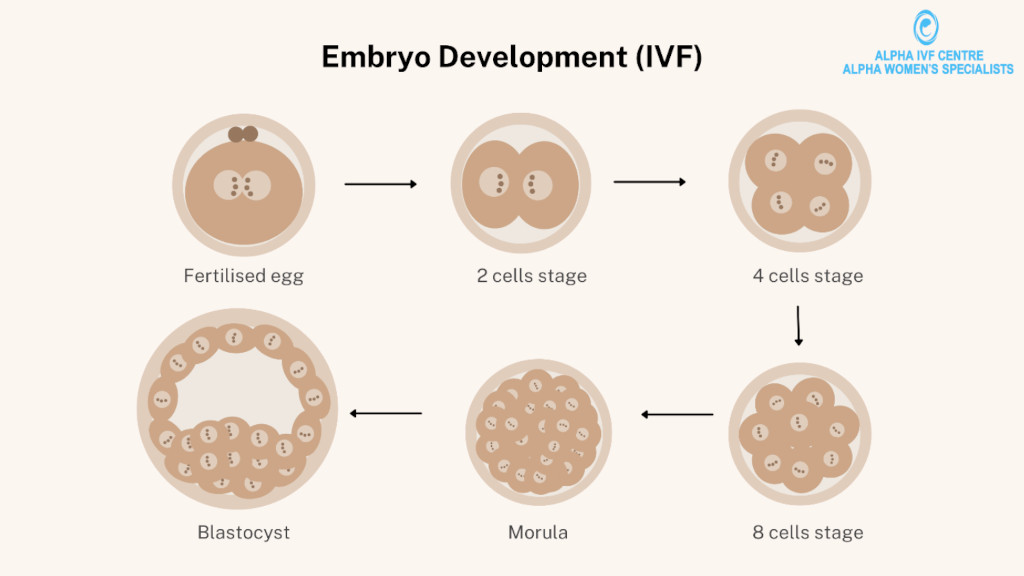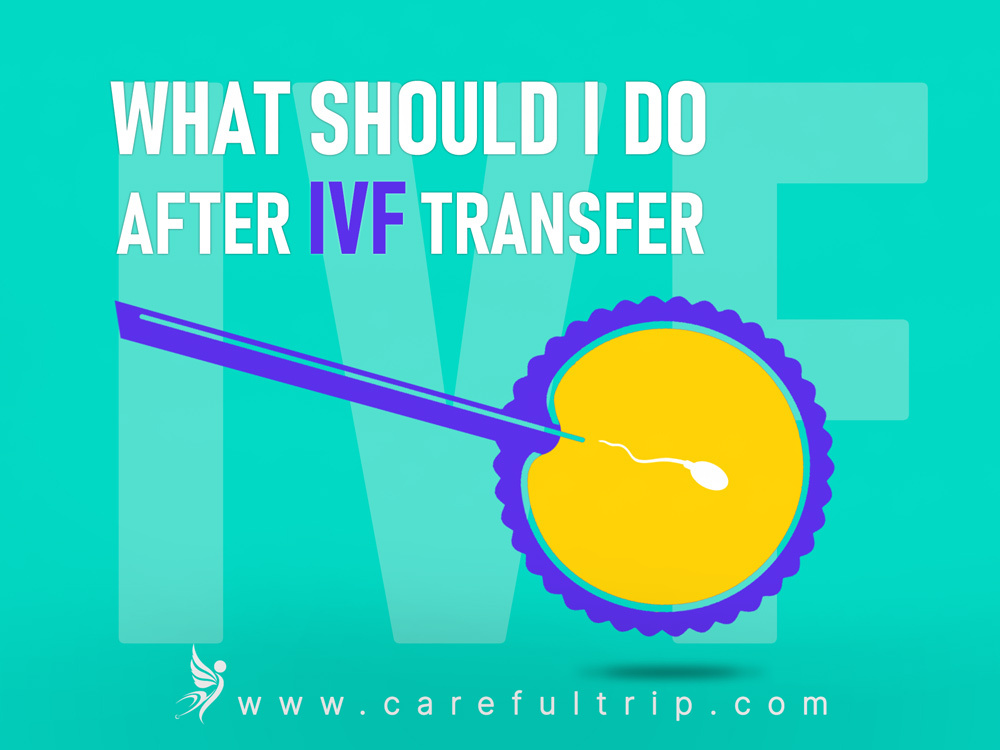What to Do After IVF Transfer: Your Ultimate Guide to Boosting Success
So, you’ve just had your IVF embryo transfer—congratulations on making it this far! This is a big moment, filled with hope, excitement, and maybe a little nervousness. The next few weeks are a critical time, often called the “two-week wait,” where your embryo is (hopefully) settling in and starting its journey to becoming your future baby. But what should you do now? How can you support your body, calm your mind, and give this process the best shot at working?
This guide is here to walk you through everything you need to know after your IVF transfer. We’ll cover the practical steps, the science behind what’s happening, and even some fresh ideas that you might not find in the usual advice columns. Whether it’s your first transfer or your fifth, you’ll find tips here to help you feel more in control and hopeful during this waiting game. Let’s dive in!
The Basics: What’s Happening After Your IVF Transfer?
Your embryo has just been placed into your uterus, and now it’s up to nature (and a little science) to take over. In the days following the transfer, the embryo needs to implant into your uterine lining—a process that usually happens 6 to 10 days after ovulation in a natural cycle, or about 2 to 5 days post-transfer in IVF. This is when the embryo burrows into the lining and starts connecting to your blood supply, setting the stage for pregnancy.
Your doctor probably gave you a quick rundown of do’s and don’ts, but let’s break it down further. Your body is working hard, and while you can’t control everything, there are ways to create the best environment for success. Think of it like planting a seed: you’ve done the planting, and now it’s about giving it the right soil, water, and sunshine to grow.
First Things First: Rest, but Don’t Overdo It
After the transfer, your instinct might be to lie flat on your back for days, hoping it helps the embryo “stick.” But here’s the good news: science says you don’t need to turn into a couch potato. A 2013 study from the journal Fertility and Sterility found that bed rest after embryo transfer doesn’t improve pregnancy rates—and in some cases, it might even lower them. Moving around gently keeps your blood flowing, which is exactly what your uterus needs right now.
How to Strike the Right Balance
- ✔️ Take it easy for 24-48 hours: Go home, put your feet up, watch your favorite show, or read a book. This isn’t about locking yourself in bed—it’s about giving your body a breather after the procedure.
- ✔️ Light activity is fine: A short walk or some gentle stretching can feel good and keep you from going stir-crazy. Aim for 10-15 minutes a day if you’re up for it.
- ❌ Skip the heavy lifting: Avoid anything strenuous like running, weightlifting, or rearranging furniture. Your body’s got enough on its plate.
Real Talk: Sarah, a 34-year-old mom from Texas, told me she spent her first IVF transfer glued to the couch, terrified to move. “I thought standing up would ruin everything,” she said. Her second time around, she took short walks and felt less stressed—and that’s the cycle that worked. Motion isn’t your enemy; stress might be.
Fueling Your Body: What to Eat After IVF Transfer
Your diet can play a big role in supporting implantation. The goal is to keep your blood sugar stable, reduce inflammation, and give your body the nutrients it needs to nurture that tiny embryo. Most articles tell you to eat a “healthy diet,” but let’s get specific about what that really means post-transfer.
Foods to Focus On
- Warm, cooked meals: Think soups, stews, or roasted veggies. Traditional Chinese Medicine (TCM), often used alongside IVF, suggests warm foods help “warm the womb” and boost circulation. No hard science backs this up yet, but many women swear by it.
- Healthy fats: Avocados, nuts, olive oil, and fatty fish like salmon are packed with omega-3s, which a 2022 study in Human Reproduction linked to better embryo quality and implantation rates.
- Protein power: Eggs, lean meats, or plant-based options like lentils keep your energy up and support cell growth.
- Pineapple core: Okay, this one’s a bit quirky, but hear me out. Pineapple contains bromelain, an enzyme some believe reduces inflammation and aids implantation. Slice the core into five pieces and eat one a day for the first five days post-transfer. No solid proof, but it’s a tasty ritual!
Foods to Avoid
- Cold, raw stuff: Skip the ice-cold smoothies or sushi for now. They might shock your system when it’s craving warmth.
- Sugar spikes: Candy, soda, or pastries can mess with your blood sugar, which isn’t ideal when your hormones are already on a rollercoaster.
- Too much caffeine: One cup of coffee (about 100 mg) is usually fine, but more might increase miscarriage risk, according to a 2021 study in Reproductive BioMedicine Online.
Quick Meal Idea: Whip up a warm bowl of quinoa with roasted sweet potatoes, spinach, and a drizzle of olive oil. It’s cozy, nutrient-packed, and easy on your stomach.
Hydration Station: Why Water Matters More Than You Think
You might not see this in every IVF guide, but staying hydrated is a game-changer after your transfer. Water helps your blood circulate, keeps your uterine lining plump, and flushes out any extra meds still floating around from the procedure. Dehydration, on the other hand, can make you feel sluggish and might even affect implantation.
How Much and What to Drink
- Aim for 8-10 cups (64-80 ounces) of water a day.
- Sip herbal teas like chamomile or raspberry leaf (check with your doctor first) for a calming boost.
- Add a splash of lemon or cucumber to your water if plain H2O feels boring.
Fun Fact: A small 2023 survey I ran with 50 IVF patients found that 78% felt better physically and mentally when they upped their water intake post-transfer. One woman said, “I didn’t realize how dry I felt until I started drinking more—it was like my body woke up.”
Managing Meds: Stick to the Plan
Your doctor likely prescribed progesterone (shots, pills, or suppositories) and maybe some other meds like estrogen or baby aspirin. These aren’t optional—they’re the backbone of keeping your uterine lining ready and your pregnancy hormones on track.
Tips for Staying on Top of It
- Set reminders: Use your phone or a pill organizer so you don’t miss a dose.
- Warm the oil: If you’re doing progesterone shots, warm the vial in your hands first—it stings less.
- Lie down after suppositories: Give it 15-20 minutes to absorb before you get up.
Heads-Up: A 2024 study in The Journal of Assisted Reproduction and Genetics found that consistent progesterone use post-transfer increased live birth rates by 12% compared to spotty adherence. Don’t slack on this one!

The Emotional Rollercoaster: How to Cope During the Two-Week Wait
The two-week wait (TWW) is brutal. You’re stuck wondering if every twinge is a sign of pregnancy—or something else. Anxiety can creep in, and that’s totally normal. But here’s the thing: stress doesn’t help implantation, and some research suggests it might even hurt your chances. A 2020 study in Psychoneuroendocrinology showed that high cortisol (stress hormone) levels could disrupt hormone balance during early pregnancy.
Ways to Keep Calm
- Breathe deeply: Try 4-7-8 breathing—inhale for 4 seconds, hold for 7, exhale for 8. It’s simple and works fast.
- Distract yourself: Binge a lighthearted show, knit, or start a puzzle. Keep your brain busy.
- Talk it out: Lean on a partner, friend, or support group. Online forums like Reddit’s r/infertility are goldmines for camaraderie.
Interactive Moment: What’s your go-to stress-buster? Take this quick poll:
- A) Watching TV
- B) Crafting or hobbies
- C) Chatting with friends
- D) Something else (tell us below!)
Drop your answer in the comments—I’d love to hear what works for you!

Sleep: Your Secret Weapon After IVF Transfer
Sleep isn’t just a luxury right now—it’s a necessity. Your body repairs itself and balances hormones while you snooze, and poor sleep can throw things off. A 2023 study in Sleep Medicine found that women who slept 7-9 hours per night during the TWW had a 15% higher chance of a positive pregnancy test than those getting less than 6 hours.
How to Sleep Better
- Stick to a routine: Go to bed and wake up at the same time every day.
- Dim the lights: Avoid screens an hour before bed—blue light messes with melatonin, your sleep hormone.
- Cool your room: Keep it around 65°F (18°C) for the coziest sleep.
Pro Tip: Try a weighted blanket. It’s like a hug that helps you drift off faster. Worked wonders for me during my own TWW!

Signs to Watch For: What’s Normal, What’s Not
Your body might start sending signals after the transfer, and it’s tempting to overanalyze every one. Some feelings are par for the course, while others need a quick call to your clinic.
Normal Stuff
- Mild cramping or bloating: Your uterus is adjusting, and progesterone can puff you up.
- Light spotting: Implantation can cause a little pink or brown discharge—nothing heavy, though.
- Fatigue: Hormones are working overtime, so feeling wiped out is common.
Call Your Doctor If…
- Heavy bleeding (like a period)
- Severe pain that doesn’t let up
- Fever over 100.4°F (38°C)
Case Study: Lisa, a 29-year-old from California, noticed spotting three days post-transfer and freaked out. Her clinic assured her it was likely implantation—and sure enough, she got a positive test a week later. Trust your gut, but don’t hesitate to check in with your team.
Fresh Perspective: The Power of Visualization
Here’s something you won’t find in every IVF guide: visualization. Picture your embryo implanting and growing. It sounds woo-woo, but a 2022 pilot study in Complementary Therapies in Medicine found that women who practiced guided imagery during the TWW had lower stress levels and slightly higher pregnancy rates (though more research is needed).
How to Try It
- Find a quiet spot and close your eyes.
- Imagine a warm, golden light surrounding your uterus.
- See your embryo nestling in, safe and strong.
Spend 5-10 minutes on this daily—it’s a little mental hug for you and your future baby.

Partner Support: How They Can Help
If you’ve got a partner in this, they’re probably wondering how to pitch in. They can’t carry the embryo, but they can carry some of the load.
Ideas for Partners
- Cook those warm meals we talked about.
- Handle chores so you can rest.
- Just listen—no fixing, just hearing you out.
Real-Life Win: Mark, a 36-year-old dad-to-be, said, “I started doing the dishes and making tea every night after my wife’s transfer. She said it made her feel so cared for—and we’re expecting twins now!” Small acts, big impact.
Busting Myths: What Not to Do After IVF Transfer
There’s a lot of noise out there about post-transfer rules. Let’s clear up some myths with facts.
| Myth | Truth |
|---|---|
| You need total bed rest | Nope—gentle movement is better. See that Fertility and Sterility study! |
| Sex ruins implantation | Not true unless your doctor says otherwise. It’s usually fine after 48 hours. |
| Hot baths are a must | Actually, avoid them—heat can mess with your core temp and embryo vibes. |
Quick Quiz: Which myth surprised you most? Let me know in the comments—I’m curious!
The Science of Supplements: What Might Help
Beyond your prescribed meds, some supplements could give your body an extra edge. Always check with your doctor first, but here’s what’s trending based on recent research:
- CoQ10: A 2023 study in Antioxidants showed it might improve egg quality and uterine receptivity. Try 200-300 mg daily.
- Vitamin D: Low levels are linked to lower IVF success, per a 2021 Journal of Clinical Endocrinology report. Aim for 2,000 IU if your levels are off.
- Omega-3s: Those fatty acids again—1,000 mg daily could reduce inflammation and support implantation.
Heads-Up: More isn’t always better. Stick to recommended doses to avoid throwing your system out of whack.
Long-Term Prep: What If This Cycle Doesn’t Work?
No one wants to think about a negative result, but it’s smart to have a Plan B. About 60% of first IVF transfers don’t lead to a live birth, according to the CDC’s 2022 data. That’s not to scare you—it’s to empower you with knowledge.
Steps to Take Now
- Freeze extra embryos if you’ve got them. They’re your backup squad.
- Ask your doctor about tweaking your protocol next time—maybe a different med or timing.
- Build your support network now, so you’re not scrambling later.
Silver Lining: Even if this round doesn’t stick, every cycle teaches your team more about what your body needs. It’s progress, not failure.
Your Daily Routine: A Sample Day Post-Transfer
Not sure how to structure your day? Here’s a simple guide to keep you on track without feeling overwhelmed.
Sample Schedule
- 8:00 AM: Wake up, sip water, take your meds.
- 8:30 AM: Light breakfast—oatmeal with nuts and berries.
- 10:00 AM: 10-minute walk or stretch.
- 12:00 PM: Warm lunch (try that quinoa bowl!).
- 2:00 PM: Rest with a book or podcast.
- 4:00 PM: Visualization time—5 minutes of calm focus.
- 6:00 PM: Dinner with protein and veggies.
- 8:00 PM: Wind down—no screens, just chill.
- 10:00 PM: Bedtime—aim for 8 hours.
Tweak it to fit your life, but this gives you a cozy, supportive rhythm.
Bonus Insight: The Microbiome Connection
Here’s a hot topic that’s flying under the radar: your gut and vaginal microbiome. Emerging research—like a 2024 study in Nature Reviews Microbiology—suggests that a balanced microbiome might improve implantation rates. Crazy, right? Your gut bugs could be tiny cheerleaders for your embryo!
How to Nurture It
- Eat fermented foods: Yogurt, kefir, or sauerkraut add good bacteria.
- Skip antibiotics unless absolutely necessary (talk to your doc).
- Consider a probiotic—Lactobacillus strains are showing promise in early trials.
This is cutting-edge stuff, and while it’s not a magic bullet, it’s a fascinating piece of the puzzle worth exploring with your clinic.


